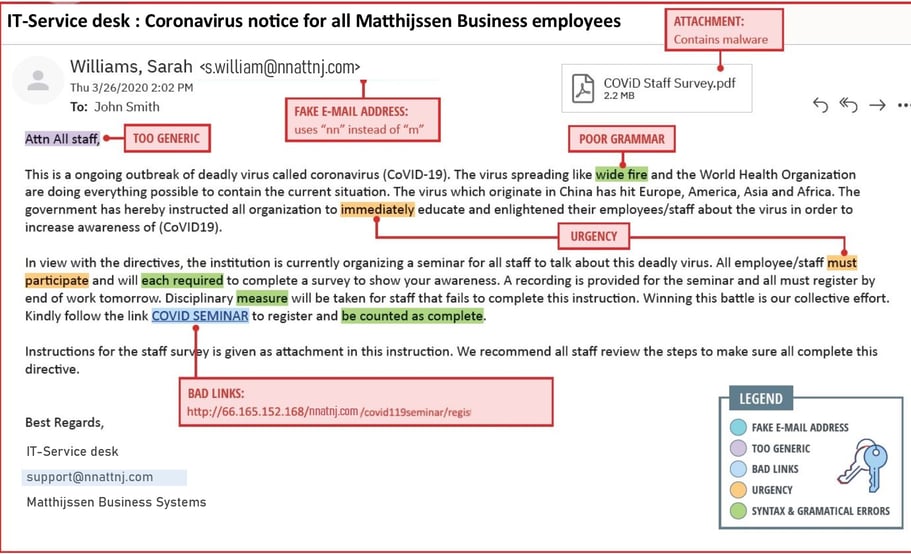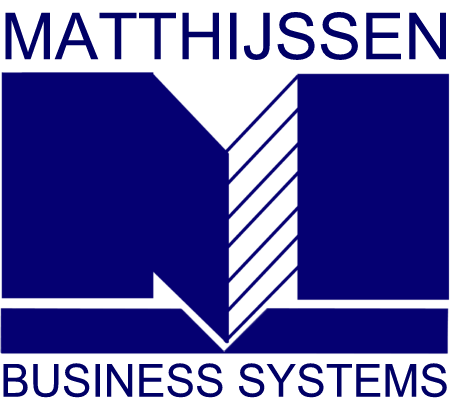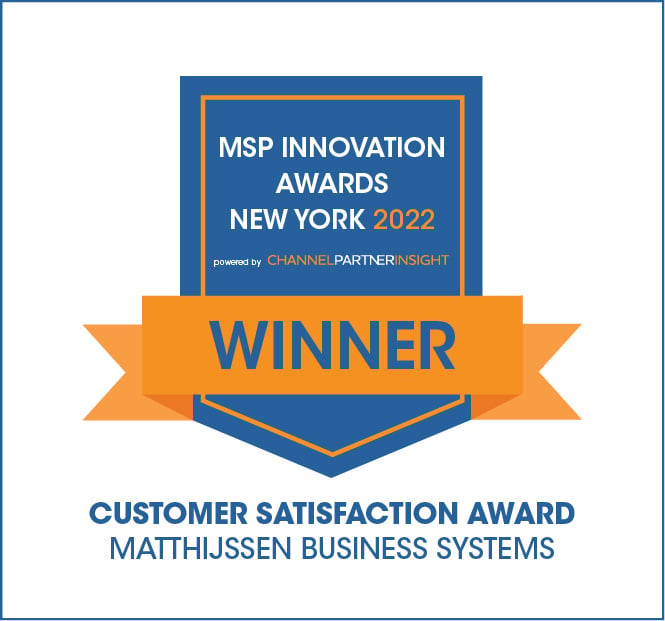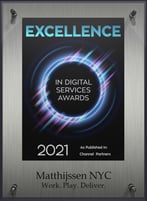BEWARE: COVID-19 PHISHING EMAILS
Avoid COVID-19 phishing scams by practicing good email hygiene. The CDC recommends you take at least 20 seconds to wash your hands to avoid germs. We recommend you take at least 20 seconds to review each email to avoid falling victim to a phishing scam.

GOOD EMAIL HYGIENE
1) WATCH FOR OVERLY GENERIC CONTENT AND GREETINGS
Cyber criminals will send a large batch of emails. Look for examples like “Dear valued customer.”
2) EXAMINE THE ENTIRE FROM EMAIL ADDRESS
The first part of the email address may be legitimate but the last part might be off by letter or may include a number in the usual domain.
3) LOOK FOR URGENCY OR DEMANDING ACTIONS
“You’ve won! Click here to redeem prize,” or “We have your browser history pay now or we are telling your boss.”
4) CAREFULLY CHECK ALL LINKS
Mouse over the link and see if the destination matches where the email implies you will be taken.
5) NOTICE MISSPELLINGS, INCORRECT GRAMMAR, & ODD PHRASING
This might be a deliberate attempt to try to bypass spam filters.
6) CHECK FOR SECURE WEBSITES
Any webpage where you enter personal information should have a url with https://. The “s” stands for secure.
7) DON’T CLICK ON ATTACHMENTS RIGHT AWAY
Attachments containing viruses might have an intriguing message encouraging you to open them such as “Here is the Schedule I promised.”
Contact our experts with questions or concerns you may have with your email spam filters or setups.
Spam filters detect unsolicited, unwanted, and virus-infested email (called spam) and stop it from getting into email inboxes. Spam filters are applied to both inbound email (email entering the network) and outbound email (email leaving the network). Spam emails are more than just a nuisance, they reduce productivity, make it easier to miss important emails, and impact network performance by increasing mail-server traffic.












